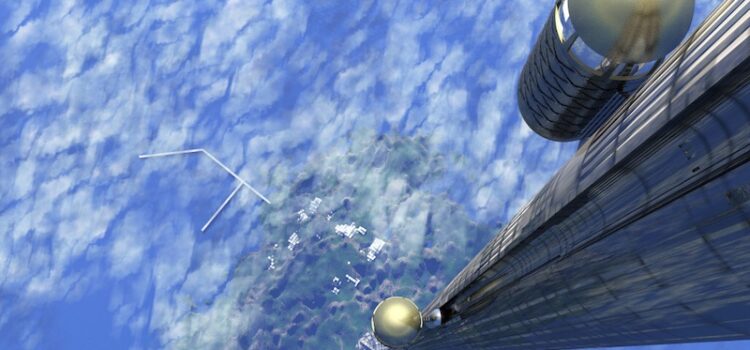
One of the largest demanding situations to area tour is escaping Earth’s orbit. Whether or not it’s visiting to an orbital area station, going to the moon, or starting off for different planets, breaking freed from Earth’s orbit is the first, and biggest, step.
Space elevators, lengthy a staple of technology fiction, promise an progressive manner to conquer Earth’s orbit. According to the premise, an extended cable, anchored to Earth on the equator, presents a manner to transport people, supplies, and cars into area. By having a counterbalance on the some distance stop of the tether, the centrifugal forces created through Earth’s rotation could conquer Earth’s gravity, ensuing withinside the cable final taut and vertical.
Despite being defined as early as 1895 through Russian scientist Konstantin Tsiolkovsky (through NASA), substances sturdy sufficient to construct a conventional area elevator do now no longer but exist or are prohibitive to make withinside the essential quantities. With a few modifications, however, an elevator can be viable. Scientists were operating on methods of creating the gap elevator a truth the usage of cutting-edge technology and substances. These efforts have fallen into as a minimum separate camps.
The multi-cable approach
The maximum promising approach is one proposed through York University’s George Zhu, a professor of mechanical engineering who has co-authored a examine at the idea, in step with Mashable. The approach could contain the usage of cables, instead of one, just like a cable automobile system.
“It’s like cable cars, shifting from a decrease spacecraft to an top spacecraft,” Zhu explains. “They hold moving into a loop, they hold it solid. In technical terms, it’s nearly done… I’m very assured we can have it through the twenty second century.”
Using cables, rather than a unmarried one, could make it plenty less difficult to hold the elevator solid and save you cross-winds in Earth’s environment from buffeting it approximately. The cables could be suspended above the Earth’s surface, instead of anchored to it, in addition lowering stresses. Even with a rocket required to attain the decrease degree of the elevator, the general fee could nevertheless be extensively decrease than the usage of a rocket for the complete journey.
While Zhu believes this layout is viable withinside the twenty second century, the project’s lead, Brendan Quine, companion professor of York’s branch of earth and area technology and engineering, appears greater constructive approximately the time frame.
“I don’t need to understate the technological issues (but) I assume it might be realizable inside 10 years,” he advised Toronto.com.
The opposite area elevator
Another, greater bold project, is one that might opposite the course of the gap elevator. Instead of being anchored on Earth, Zephyr Penoyre from the University of Cambridge and Emily Sandford at Columbia University, recommend anchoring the gap elevator at the Moon.
As MIT Technology Review explains, the cable could byskip via the Lagrange factor, the factor among the Earth and Moon in which their gravitational forces cancel every different out. This could be the right spot to construct a kind of “base camp” in which creation tasks and medical experiments may be competently conducted. Unlike Earth’s orbit, the vicinity could provide real zero-g, and not using a gravitational forces pulling in any course.
This precise form of area elevator could now no longer be as beneficial as conventional proposals for breaking freed from Earth’s orbit, or sports without delay in its vicinity. It could, however, extensively lessen the fee and demanding situations concerned in visiting to and from the Moon, making colonization a totally actual opportunity.
The high-quality factor approximately each of those proposals is they may be constructed totally with substances — which includes titanium and aluminum — which are broadly available, creating a area elevator a totally actual opportunity the usage of today’s technology.












